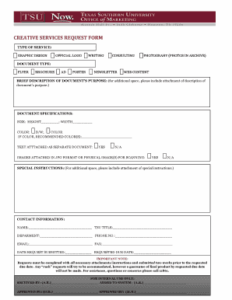Stepping into an art show, whether you’re an artist showcasing your passion or an organizer bringing creative visions to life, is an exciting experience. The vibrant colors, the diverse styles, the buzz of conversation – it’s all part of what makes these events so special. But after the last guest leaves and the art is packed away, how do you truly know if your event hit the mark? How do you gauge the impact your art had, or understand what could make the next show even better?
This is where the magic of a well-designed visitor survey template for an art show comes into play. It’s not just about collecting data; it’s about opening a direct line of communication with your audience. Their insights are invaluable, offering a clear roadmap for improvement, helping you understand your patrons better, and ultimately, ensuring your future exhibitions resonate deeply with those who matter most – your visitors. Without their candid feedback, you’re essentially navigating in the dark, hoping your efforts land where they should.
Crafting the Perfect Feedback Loop for Your Art Show
Think of your visitor survey as a compass, guiding you toward a more successful and impactful art show experience. It’s not enough to just throw a few questions onto a piece of paper; the real power lies in asking the right questions in the right way. Your goal is to gather actionable insights, not just superficial pleasantries. This means moving beyond simple "did you like it?" queries and delving into what truly moved or intrigued your audience, or what aspects of the event could be polished.
A thoughtfully designed survey considers various facets of the art show experience. It’s about understanding who your visitors are, what drew them to your show, their impressions of the artwork, the venue, and even the overall atmosphere. For an artist, this feedback can illuminate which pieces resonate most deeply, or even highlight new directions for their creative journey. For an organizer, it pinpoints operational strengths and weaknesses, from parking availability to the flow of foot traffic.
Key Question Categories to Consider
- **Demographics:** Who are your visitors? (Age range, general location, how they heard about the show). This helps you understand your audience profile and tailor future marketing efforts.
- **Artwork Engagement:** What did they think of the art? (Favorite pieces, overall impression of the collection, emotional response, purchase intent). This is crucial for artists to gauge their work’s impact.
- **Event Experience:** How was the show itself? (Venue layout, lighting, accessibility, staff helpfulness, overall atmosphere, ease of navigation). This provides insights for logistical improvements.
- **Future Interests:** What would they like to see next? (Suggestions for future themes, artists, or types of events). This helps shape your programming for continuous engagement.
Remember, while specific questions are vital, providing opportunities for open-ended comments is equally important. Sometimes, the most valuable feedback comes from a visitor’s unprompted thoughts and feelings. These qualitative insights can reveal nuances that multiple-choice questions simply can’t capture. Keep the survey concise and user-friendly; a long, cumbersome survey is less likely to be completed, no matter how well-intentioned it is. Aim for clarity and brevity to encourage maximum participation.
Putting Your Art Show Feedback to Work
Once you’ve meticulously designed your visitor survey template for your art show, the next crucial step is putting it into action and, more importantly, understanding how to leverage the data you collect. The best survey in the world is useless if its insights aren’t translated into tangible improvements. Think about the various touchpoints where visitors might be most receptive to sharing their thoughts, whether it’s at the entrance, near an exit, or even after they’ve returned home. Making it easy for them to participate is key.
Consider offering multiple ways for visitors to complete the survey. Perhaps a QR code prominently displayed that links to an online form, or a few tablets set up at a feedback station. For those who prefer a more traditional approach, a simple, well-designed paper form with a designated drop-off box can also be effective. You might even consider a small incentive, like entry into a draw for a piece of art or a discount on future tickets, to encourage participation. The goal is to maximize the number of responses to ensure your data is representative.
Once the surveys are collected, the real work begins: analysis. Don’t just glance at the numbers; dig deep. Look for recurring themes in the open-ended comments. Are multiple people mentioning a lack of seating, or perhaps praising the interactive elements? Are there specific artists whose work consistently received high praise? Identifying these patterns will help you prioritize areas for improvement and recognize what you’re already doing well. It’s a continuous learning process that strengthens your offerings.
Finally, and perhaps most critically, use the insights to inform your future decisions. Did visitors express a strong desire for more workshops? Incorporate them into your next event. Were there consistent comments about confusing signage? Improve your wayfinding. The visitor survey template art show you employed is not merely a data collection tool; it’s a strategic instrument for growth. By actively listening to your audience, you foster a stronger connection, build loyalty, and ensure that each subsequent art show is not just an event, but a truly memorable and evolving experience for everyone involved.
Embracing this feedback loop means you’re always evolving, always improving, and always connecting more deeply with the very people who make your art shows possible. It transforms the one-time experience of a visitor into a long-term relationship, built on understanding and responsiveness. This commitment to continuous improvement ensures your art shows remain vibrant, relevant, and eagerly anticipated events in the community.

